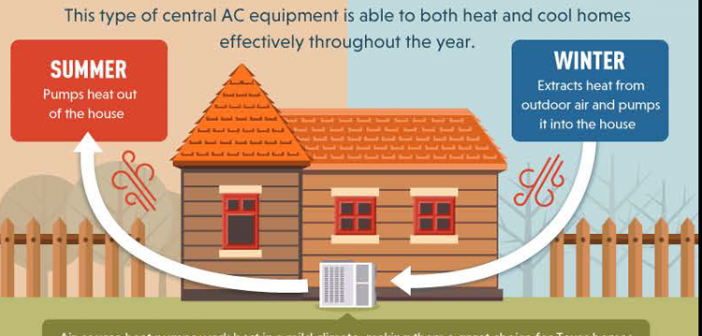Summers in Texas are hot. So hot, in fact, that 98% of homes in Texas run air conditioners, according to the U.S. Department of Energy. People in the south are twice as likely as the rest of the states to run those air conditioners all day, every day (and probably all night, too) during the summer. By far, the most popular form of AC in the south is central air; about 85% of southerners use central air as opposed to a wall unit.
When it’s hot, your main concern is getting your house cool and keeping it that way. But air conditioning in Texas accounts for 18% of home energy usage, compared to just 6% in the rest of the U.S. When you use that much energy for cooling, you should know your options. Air-source heat pumps are the popular choice for Texans because of how they work. Heat pumps use a heat exchange process to remove heat from the house in summer and pump it back into the house in winter. They’re great for climates with moderate winters.
A central AC unit can be an air-source heat pump, but some are ground-source instead. Some homes have ductwork installed while others use ductless mini-split systems. Each type of cooling has advantages and disadvantages. Use this handy infographic below, syndicated by McWilliams and Son Heating and Air Conditioning, to get more information on all the different ways to keep a Texas house cool on those blazing hot summer days.





